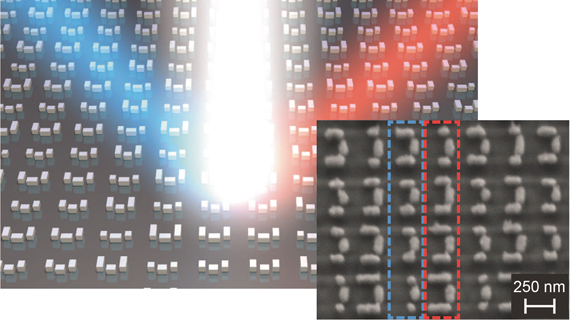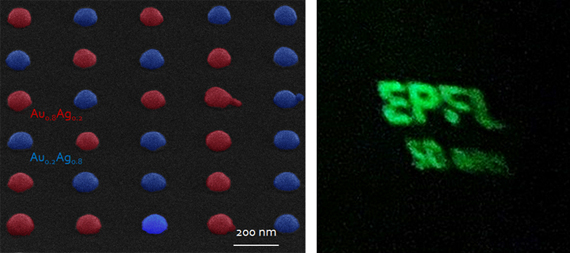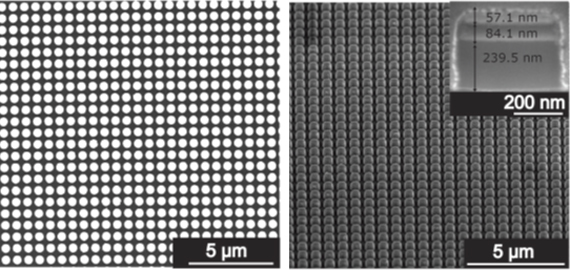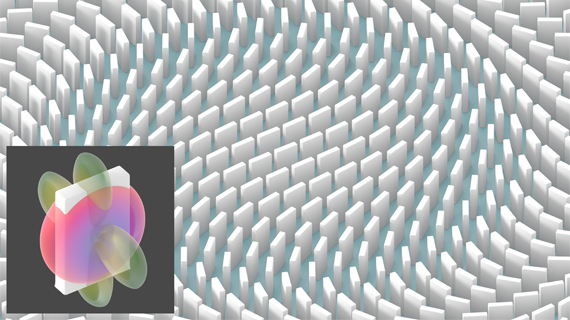
The optical properties of an object, including a lens or an optical component, are determined by its atomic structure. At the turn of the 21st century, David Smith from Duke University had the idea to develop artificial materials – so-called meta-materials – built from nanostructures instead of atoms. The challenge in this approach resides in the nanostructures size, which must be much smaller than the wavelength, such that the incoming radiation notices a homogeneous material (the same is true for example in a piece of glass, which appears homogeneous under light illumination because the SiO2 molecules are much smaller than the wavelength of light). Metamaterials were hence first developed for microwaves, where the illumination wavelength is very large and the structures do not need to be excessively small.
Over the last decade, progress in nanotechnology have enabled the fabrication of extremely small structures, such that metamaterials could be transposed into the optical regime. Metasurfaces represent a special class of 2D metamaterials, where nanostructures are fabricated on a surface to produce exotic optical effects that do not occur in natural materials.
The previous image illustrates such a metasurface, where “U”-shaped silver nanostructures are deposited on a surface. When white light is incident on that metasurface, one wavelength (blue) is reflected to the left, while another wavelength (red) is reflected to the right; an effect that is impossible with classical materials.

We develop metasurfaces with a broad range of materials and geometries. The previous example is made from Au-Ag alloys with different stoichiometries, indicated with blue and red colors on the SEM image on the left. An original low temperature annealing technique was developed for that purpose. When the metasurface is illuminated with a green laser, it produces a hologram with the EPFL anniversary logo.
In the following example, we used hybrid nanostructures – the so-called meta-atoms – that combine a Silicon cylinder at the bottom with an Aluminum disk at the top. This combination of a dielectric with a plasmonic metal produces a very rich spectral response that we used as biosensor.

The modeling and the design of metasurfaces is also an interesting topic, for which we apply many different theoretical and numerical models, from multipoles expansions to full-wave simulations and semi-analytical models, e.g. for the homogenization of metasurfaces’ susceptibilities. The image below illustrates the analysis of a dielectric metasurface in terms of its multipoles.
